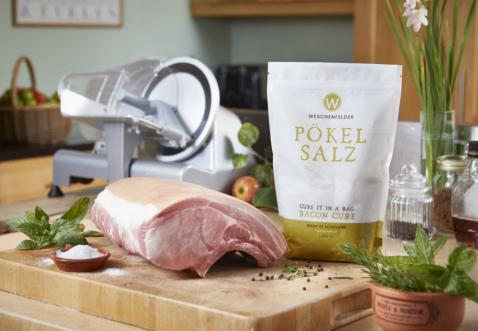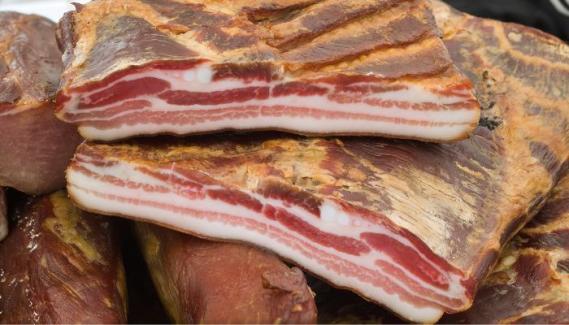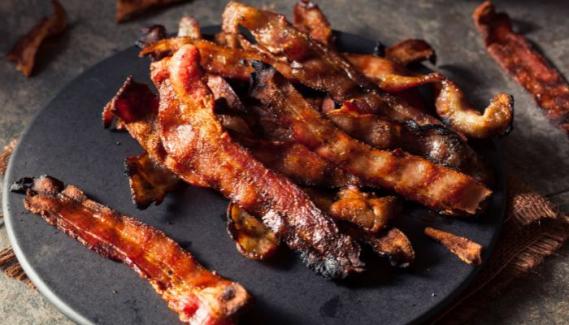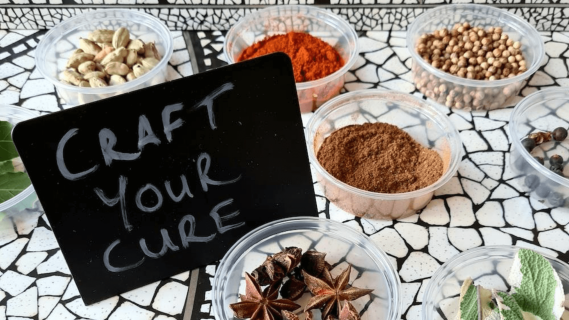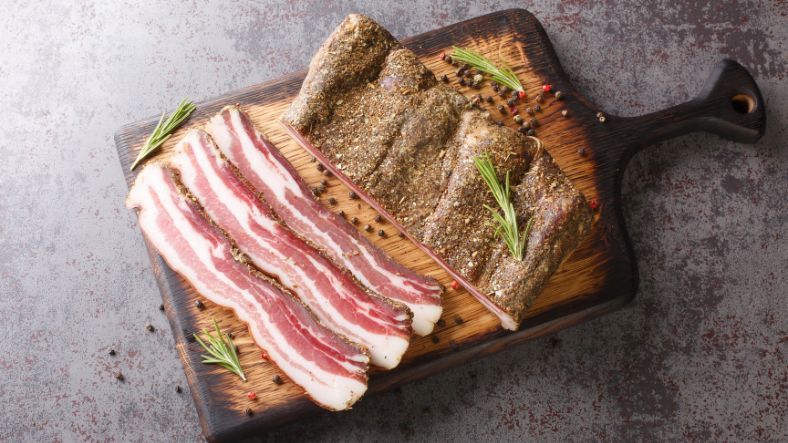

This is a guest blog from our late friend Paul Peacock whose discovery of homemade bacon opened up a whole new perspective on bacon!
There is something therapeutic about curing your own bacon and watching a quality piece of pork belly turn into bacon.
From what joints to use to trialled and tested recipes I want to take you through the art of curing your own bacon at home and show you just how easy it is.
Weschenfelder's range of cures makes it simple and easy to cure bacon and put your own signature flavours into your bacon. Once you have cured your first piece of bacon and tasted the rewards you will likely never buy from the supermarkets again.
Perhaps one of the most liberating and eye-opening discoveries I ever made was how to make bacon. Until then I thought it was food that always was made in a factory and sold to the rest of us in shops. The difference between good and bad bacon was, to me at least, measured in how cheaply the company made it.
Bacon has actually been the British staple meat for 1500 years from a time when large monasteries in the north and ennobled farms in the south fed the poor with quality bacon to the days when every home had a pig and every family knew how to preserve the meat with salt.
What meat is best for Bacon?
Streaky bacon comes from belly pork, which can be bought in whole sheets from your butcher, or if you are having your own animal slaughtered, can simply be trimmed square and ready for curing. Back bacon comes from loin, the muscles that run the length of the back of the animal, and is much less fatty.
There are other cuts, the middle being a combination of streaky and back, and is quite difficult to get hold of because its butchering can be quite wasteful. You can also use shoulder or leg for producing bacon, and offcuts for creating lardons and small cuts.
What is curing Bacon?
Essentially, curing is the preserving process and involves salt. This works in two ways, firstly it draws water from the meat, and as bacteria in the meat have a reduced water availability, they cannot grow so rapidly. It also chemically poisons bacteria and other spoiling organisms.
Then the cure also adds flavour, and many curing recipes have spices and sugars as a fundamental part of the curing recipe.
How do you Cure Bacon?
There are essentially two methods of curing, wet cure and dry cure.
Wet cure differs in that the salt and seasoning mixture is combined with water. The meat is then immersed in pre-measured liquid and again is left for some time. Also known as brining, this method helps to preserve both the meat and the moisture of the final product.
Dry cure involves rubbing the outside of the meat with a special blend of salt and seasonings and allowing the meat to rest in this mixture for a long period of time. No water is added in this process – the meat is simply left to cure for a full, robust flavour.
Dry curing is the older and more traditional method of the two, and the lack of added liquid means there is less shrinkage in the pan when cooked.
How does Bacon take on flavour?
It may seem like there are more than two types of cure, but other variations, like sweetcure for example, are simply dry-cured or wet-cured with a different flavouring or ingredient.
Sweetcure as the name suggests is simply a plain cure with sugar added to it. Often sweet cure uses dark sugars such as demerara or muscovado.
Another popular cure is a maple cure which simply adds maple syrup to the mix when curing. The rich flavours of the syrup create a lovely caramel flavour when cooked, and even richer flavours if smoked!
How to Dry Cure my Bacon?
This is the mainstay of home curing and always produces consistent results. This way a measured amount of cure is rubbed into all the meat surfaces, everywhere, not missing any nook and cranny. This is then placed into a food-grade, lidded container and after 24 hours the meat is removed, and the liquor drained away.
Each day the amount of liquor is reduced and the bacon is ready for cutting in around five to seven days.
How to Wet Cure my Bacon?
A wet cure is made by boiling the curing salt and other substances in a large pan, removing the scum and allow to cool before pouring over the cut of meat you wish to cure.
The meat is turned over daily for about three to seven days and then removed, washed and allowed to dry. Clearly, the penetration of salt to the centre of the meat is an issue on some cuts, when a brine pump is used to inject cure directly into the centre of the muscle.
Typically, a two-kilo piece of meat is cured for three to seven days with an appropriate spice/cure mix, and thence another day per extra kilo after that. The meat is soaked in a large, food-grade, lidded polyethene container, strong enough to take the size and weight of the materials.
Sometimes, when you are curing a lot of meat, it is advisable to pour off the cure halfway through the process and replenish it with fresh.
Wet Cure Recipe
My favourite cure is as follows:
20 litres of water
2.5 kilo’s curing salt (Weschenfelder supacure)
300 g dark sugar
1 bottle of stout (optional)
1 tablespoon of mustard (English)
2 tablespoons of crushed black peppercorns
You can buy ready-made wet cures such as the Weschenfelder ‘Quick Cure’, for curing hams, tongue and other cuts as well as making bacon.
Dry Cure Recipe
This recipe makes up the cure mix before you add it to your meat.
1kg curing salt (i.e Supacure or Pökel Salz)
125g sugar (of any type you prefer)
1 tablespoon of crushed black peppercorns
25g finely chopped coriander
10g chopped mint
Weigh out your meat, then simply weigh out 3.5% of the above cure to the weight of the meat. i.e. 35g per kilo of meat. Leave it to cure for 5 to 7 days depending on the weight of the meat. You should allow half and inch per day for dry curing.
The herbs are optional, but if it is Christmas I add a couple of crushed cloves too - just for a nice Christmassy flavour.
Wash and Cut
When the bacon is cured, wash it and dry it. I find it more convenient to slice the bacon and vacuum pack it, storing it in the freezer when the quantity warrants it. I always test a slice before cooking a batch, and if too salty, I soak it in water for 30 minutes before retesting.
You can use a good sharp knife for slicing, but eventually, you will want a bacon slicer to make a real professional job of it. After all, you have gone to all that trouble!

